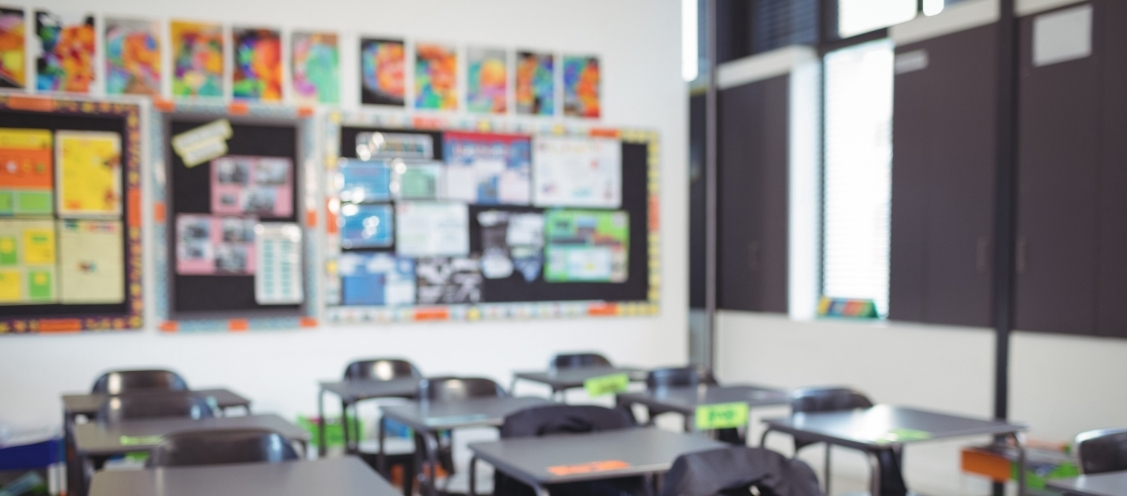




Take a moment to think about your classroom, then have a look around. Is there anything on the walls that could distract students’ attention? Can they all see the board easily?
There is so much more to a classroom than the space in front of the students, where they put their books. If you were a student in the class, would you be happy to look around the classroom, and would it inspire you to learn?
All of these questions are important when thinking about how to actively engage the students in our lessons. We know that anything happening in the room can distract our students, and this distraction can result in a breakdown in communication between teacher and students.
To prevent this from happening, think about how easy it is for your students to focus their attention, including those students sitting at the back of the room. One thing is certain, it’s not enough for the visuals we use to capture our students’ attention momentarily; they must fully engage students in order to be effective. If not, they will simply serve as a momentary distraction with no real benefit to the students’ learning.
The negative consequences of not using visuals effectively in class can have a significant impact on how well students learn and how much they gain from your lessons. A lack of visuals can mean students (and teacher) feel bored and the classes become repetitive. Students may also find it more difficult to use language creatively and have fewer ideas when it comes to using the language in free practice.
Why should we use visuals in class?
Successful language learning happens when you make connections between what you see, what you hear and what you say, so we need to make sure that we create these favorable conditions for language learning in the classroom too. As educational researcher John Hattie says, ‘When teaching and learning are visible, there is a greater likelihood of students reaching higher levels of achievement.’ This is something that all teachers should keep in mind as they are planning and teaching their lessons on a daily basis.
A greater use of visuals in class can:
What types of visuals can we use in class?
A visual is anything that the students can see: a text, image or video. Visual support is also effective when the students produce it themselves.
Here are some examples of the visuals that language teachers commonly use:
At what stages of the lesson can we use visuals?
We can use visuals very effectively at all stages of the lesson, not only at the beginning or at the end of a class. Generally, we divide our lessons into 5 main areas: warmer/lead in, language clarification, controlled practice, freer practice and feedback. Teachers need to think about how they can maximize the use of visuals in each of these stages:
1.- Warmer/Lead in
Ideas include images to elicit a grammar structure or to predict the content of a reading/listening activity, mind maps, images or video recordings to elicit vocabulary and realia to introduce a topic.
2.- Language clarification
Use images to check students’ understanding, and the board to focus on form and pronunciation, as well as to clarify the meaning of any items of vocabulary. Provide examples of language in context to make a comparative analysis of the different grammar structures.
3.- Controlled practice
By keeping grammar forms on the board as a reference, students can construct the parts like a puzzle. Use model answers for controlled practice questions, completing the first answer as a class, and flashcards or images for written vocabulary practice.
4.- Freer practice
Use charts, graphs and picture games for vocabulary and grammar. Ask students to draw pictures based on a language prompt, mime a structure, or create sentences based on a picture or video.
5.- Feedback
Write students’ answers on the board and ask them to identify the written errors, as well as examples of the correct use of language students have produced. Use a section of the board for emergent language, and examples of how they can improve their language.
5 golden rules for using visuals in class
There are many reasons why teachers avoid using visuals in class. Some teachers think their drawing skills are not up to scratch, or that visuals take a lot of time to prepare. Others don’t have the colored board pens they need, or only limited access to technology in the classroom.
All the above are valid concerns, but we should use the material at our disposal to implement visuals whenever we can. This can mean using nothing more than a pencil and paper, if necessary.
And finally, here are my 5 golden rules for using visuals effectively in class:
Extra resources:
https://visible-learning.org/